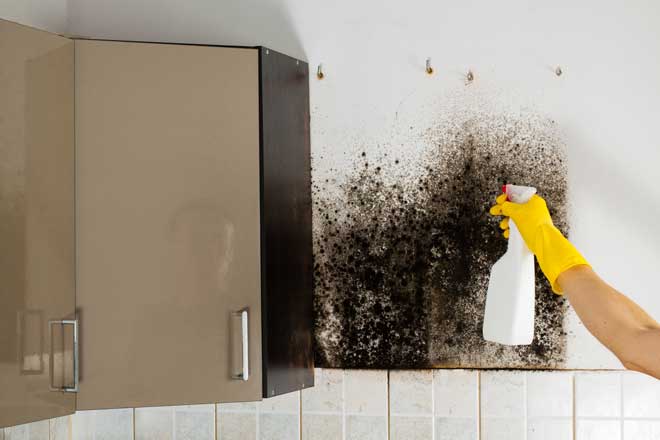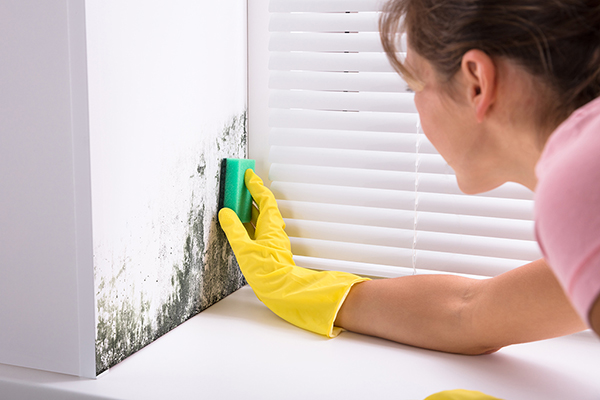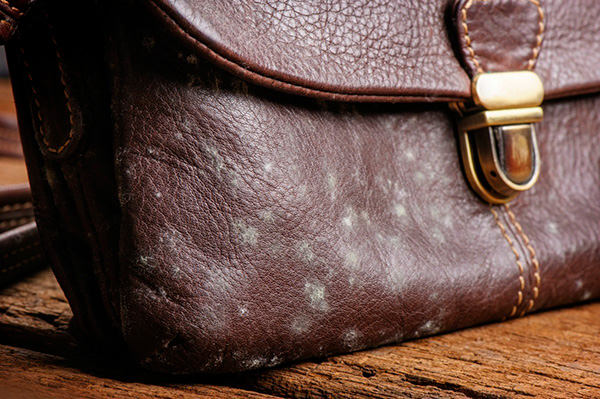The characteristic musty smell of mold indicates that a fungus dangerous to health has wound up in the room. The first thing to do is to eliminate the fungus and the causes of its occurrence. Mold quickly captures rooms that are poorly ventilated, where there is a moderately cool or warm temperature and an increased level of humidity is recorded. After treating the fungus, you can still smell it, so in this article we will tell you how to deal with an unpleasant odor.

How to remove the smell of mold in an apartment, house, separate room
With the unpleasant smell of a fungal infection, disinfecting and disinfecting improvised means, as well as drugs that neutralize the unpleasant odor, will help to cope. We act in the following sequence.
Washing walls and furniture
We move all the furniture to the middle of the room, the walls affected by the fungus (they will be dirty gray, with spots), first wash it if possible. To do this, you can use the most simple and safe means of household chemicals — laundry soap. We rub a quarter of the bar on a vegetable grater, dilute it with water at room temperature, wait 15 minutes until the chips dissolve. We take a sponge, moisten it with soapy water and apply a thick layer on the affected areas of the walls, as well as on the back of the furniture that has come into contact with contaminated surfaces. We lather thoroughly, trying to wipe off the fungus and stains from it. If the mold layer is large, you can first use a construction spatula to remove it. After cleaning the surfaces with soap, which, by the way, has disinfectant properties, we wash them with clean water until the foam stops forming on the sponge. Allows walls and furniture to dry.
Disinfecting surfaces with improvised means
Next, you need to use preparations that will “finish off” the mold and create an invisible protective layer on the walls and furniture so that the fungus no longer captures these surfaces. What can be used:
-
Medical alcohol diluted with water, vodka.
-
Hydrogen peroxide (may cause discoloration of surfaces, so test on a small area first).
-
Vinegar diluted with water.
-
Ammonia.
-
Whiteness (1 part product to 10 parts water).
-
A solution of baking soda.
All these liquids are convenient to use with a spray bottle. Pour into a container, add, if desired, a few drops of essential oil with antiseptic properties (tea tree, spruce, etc.), spray on walls and furniture walls, let dry, ventilate the room. Especially carefully you need to ventilate the rooms after using ammonia, as it has a very pungent smell.
We arrange furniture correctly
Make sure that the furniture does not touch the walls. There should be a small gap of at least a few centimeters so that air can circulate freely throughout the room, and there are no conditions for the recurrence of mold spots.
We use fragrances and odor neutralizers
To completely drown out the smell of mold in an apartment, house or a single room, you can use impromptu flavors, purchased air fresheners, neutralizers, and similar preparations. Here are some options:
-
Aroma sticks.
-
Aroma candles.
-
Aroma lamp.
-
Household air freshener.
-
Homemade flavoring — a vase with crushed citrus peels or ground coffee.
-
Odor absorber — a mixture of salt and soda, crushed activated carbon.
-
Odor neutralizer in the apartment.
You can also use a special liquid to eliminate odors, including the smell of mold. For example, Reimador’s German-made hand spray liquid leaves no residue and can be used on any surface.
How to get rid of moldy smell in bathrooms and toilets
First you need, of course, to remove the mold itself. It usually breeds on surfaces in hard-to-reach areas that are missed during cleaning (under the sink, on the bottom of the toilet bowl, under the bathtub), as well as on the tiles that decorate the walls. Especially in the connecting seams and at the junction of the bathroom itself with the wall. To eliminate mold in the bathroom, you can use the already listed preparations — Whiteness, vinegar, diluted alcohol. And also Domestos — just when it comes time to clean the toilet, apply a little product to the sponge and treat all the affected surfaces, if you apply the drug in a thin layer on a previously cleaned (washed) surface, you can not even rinse it off. From specialized products that simultaneously remove mold and eliminate an unpleasant, musty smell, you can use Bugs Anti-Mold. The drug, although not the cheapest (about 4 dollars per 500 ml), but with regular (prophylactic) use, it shows excellent efficiency. After the mold treatment, the smell of the fungus will not remain, ventilate the room more often, monitor the integrity of the water pipes, connect the hot battery, and this “aroma” will no longer appear in the bathroom or toilet.
How to remove the smell of mold on the balcony or loggia

Mold on the balcony occurs quite often if it is not insulated or a high-quality ventilation system is not established there. Especially often the fungus affects those balconies and loggias where vegetables are stored in autumn and winter, since it is on them that it multiplies when it enters the nutrient medium. To eliminate mold and smell from it, treat the surfaces with any antimycotic agent, for example, a solution of copper sulfate (10 liters of water, 2 tablespoons of vinegar, 0.5 kg of copper sulfate). Or wash the room with a chlorine-containing household chemical, for example, Whiteness, dissolved in water. If you plan to store food on the balcony, it is better to process it using safer preparations — laundry soap, soda and vinegar, hydrogen peroxide.
The smell of mold comes from upholstered furniture, it smells in the closet — what to do
First of all, you need to try to take out the furniture for processing in the open air. If this is not possible, consider whether you can perform the procedure on a balcony with open windows. If this is not possible, then open the windows in the room so that the furniture is ventilated at the same time. If upholstered furniture needs to be cleaned and deodorized, proceed as follows:
-
Scrub the fungus stain with a hard or semi-hard (depending on the upholstery material) brush.
-
Treat the stain and nearby areas with an aqueous solution of soda. You can try to rub some of the product into the fabric in order to thoroughly and deeply clean the fibers.
-
Leave the baking soda for 1–2 hours, then first brush it off with a brush, and then wash off the residue with plain lukewarm water. To prevent water stains, treat the entire surface of the furniture upholstery. If the material allows, clean the upholstery additionally with a soapy solution of laundry soap.
-
Dry the furniture thoroughly in the sun or with a hair dryer.
-
Vacuum furniture if possible.
If you need to remove the smell of mold from the closet, “walls”, remove all things, shoes, etc. from it. (which does not place to dry and ventilate). Wipe the inner surfaces first with a soapy solution of laundry soap, then with plain water, then with vinegar diluted with water, and preferably with an aqueous solution of freshly squeezed lemon juice. Wipe all surfaces dry with a paper towel (toilet paper, dry cotton cloth), leave to air for several hours with doors open and drawers pulled out.
How to remove mildew smell from washing machine
Mold often appears on parts of automatic type washing machines. It literally occupies the drum door seal, the detergent dispenser, the filter and the water supply hose. To clean external, so to speak, accessible surfaces, you can use Domestos or table vinegar at a concentration of 6% or 9%. In order to remove the mold and its smell in the internal mechanism, you can pour the same vinegar in the amount of 200 ml into the container for liquid detergents. or the same volume of a soapy solution obtained from shavings of laundry soap and water. Then start washing with hot water. After completing the procedure, pour lemon juice or a solution of citric acid into the container and start the rinse mode. Then we wipe the drum inside dry, leave the washing machine door open for several hours to ventilate.
If mold has appeared on the rubber of the door seal, between its layers, wash the rubber with detergent or soapy water, then treat with vinegar, citric acid or juice. Mold stains on rubber will most likely not go anywhere, as the rubber will be permanently stained with them, but the unpleasant smell of fungus and dampness will disappear. In the future, always add vinegar to rinse things, so you make them soft, eliminate yellow spots and stains, disinfect fabrics and the inside of the washing machine.
Moldy smell in fridge — how to get rid of it
The process of removing the smell of mold from the refrigerator requires a responsible approach. After all, we need not only to remove the smell of the fungus, but also not to bring other extraneous flavors into the refrigerator that can be absorbed into the food. Therefore, no household chemicals. We use only natural preparations. In this case, the same universal laundry soap will help us out. Despite the fact that in itself it has a rather noticeable smell that many people do not like, it will not linger on the plastic and glass surfaces of the refrigerator. So, the sequence of actions:
-
We disconnect the refrigerator from the mains, take out all the products, as well as the shelves and in general everything that can be taken out. If the door is detached, it is better to remove it and process it separately.
-
We prepare a soap solution from laundry soap or take a ready-made product, liquid soap, which is sold in household chemical stores.
-
We thickly lather the entire interior space and surfaces of the refrigerator, pay special attention to the corners, butt joints, attachment details, rubber seal (we process the rubber “accordion” well, if necessary, use ear sticks to reach the bottom of the slots).
-
Leave the soap for an hour, then wash it off with plenty of warm water.
-
Wipe dry with a paper towel or cloth.
-
We wipe all surfaces with a new clean sponge soaked in a solution of vinegar or citric acid.
-
Wipe dry again, leave to ventilate with open doors for 1–2 hours.
To prevent mold from forming in the future and in order to avoid an unpleasant “aroma”, you can put an excess moisture absorber (crushed activated carbon, salt, soda or a special preparation for refrigerators) in the refrigerator, as well as an odor neutralizer, for example, an odor absorber for GREEN&CLEAN Professional refrigerators.
Clothes smell moldy — what to do
Moldy smell on clothes can appear if the fungus lives in the closet or on nearby walls. To remove the unpleasant odor, you will have to wash things. Light and those that do not shed can be washed with Whiteness, and rinsed in a solution of vinegar, in water with the addition of lemon juice. Dark clothes can be washed using a regular powder or a special product that removes unpleasant odors (for example, an additive for machine washing of sportswear from the HG brand). If the thing cannot be washed or is problematic (outerwear), you can wipe it inside and out with a sponge dipped in a weak solution of vinegar — 1–2 tablespoons per 0.5 liter of water. It is recommended to dry things after treatment from the smell of mold in the fresh air, preferably in the sun.
How to Remove Mold Smell from Shoes or Bags

If shoes and accessories are stored in high humidity conditions, they can become moldy and acquire a corresponding unpleasant odor. Do not immediately throw away the products or carry them to dry cleaning, you can try to cope on your own. What can be done:
-
If the shoes (bag) can be washed, then wash it outside with laundry soap. After that, wipe the inside with water, in which a few tablespoons of Whiteness or another agent containing chlorine are dissolved. Then once again treat the interior of the product with vodka and dry it, preferably in the sun.
-
If shoes or a bag cannot be washed / washed, then it is first cleaned of mold with a semi-rigid brush, and then wiped inside and out with a sponge dipped in vinegar solution. After that, dry well and ventilate the product.
-
If a strong smell of mold comes from inside the shoes, you need to remove the old insoles, put cotton balls soaked in vinegar inside, leave for a day, then pour coarse salt, soda or ground coffee inside the products, you can put bags of crushed activated charcoal. After a few days, remove the balls with vinegar and filler, brush the interior, dry, ventilate, put new insoles.
How to remove moldy smell from a thermos
It is not difficult to cope with the smell of mold on dishes, including in a thermos. If the dishes are glass, ceramic or metal, even the most unpleasant aromas do not linger on such materials. For processing, you can use ordinary salt, soda, vinegar in combination with boiling water. Pour the solution into a thermos and leave for a day. After that, you will need to wash the dishes, pour boiling water and juice of half a lemon again, leave for a few more hours, then rinse under running water and dry, leaving without a lid.
Precautions for handling mold and mold odor
When processing, you need to take precautions just in case. If salt and soda cannot greatly harm the skin, then once on the mucous membrane, they definitely will not deliver pleasant sensations. What can we say about more caustic substances, such as vinegar, ammonia, whiteness and industrial household chemicals. Therefore, you should always work in rubber gloves, which are used when cleaning the house. And also in a respirator, at least in the most elementary rag mask for the nose and mouth. The room after the procedure must be ventilated, and for the duration of the treatment from the smell of mold, ask other residents to leave the room in which it is carried out.

Добавить комментарий
Для отправки комментария вам необходимо авторизоваться.